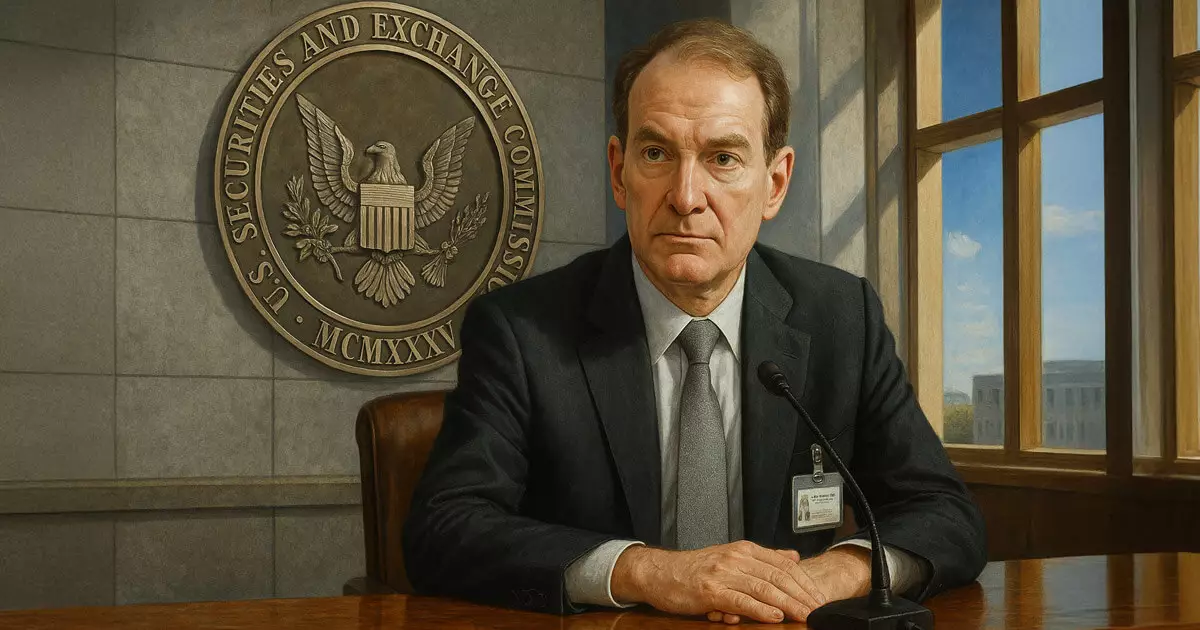In a significant pivot that could reshape the landscape of digital finance, SEC Chairman Paul Atkins has laid out a groundbreaking vision for the future of cryptocurrency regulation in the United States. By declaring an end to the previous administration’s aggressive and often ambiguous enforcement approach—a metaphorical “shoot-first-and-ask-questions-later” policy—Atkins embodies a refreshing shift that seeks to cultivate innovation rather than stifle it. This transition is not merely procedural; it signals a cultural metamorphosis within the SEC that recognizes the value of digital assets as essential components in the modern financial ecosystem.
From Confusion to Collaboration
Atkins aptly criticized the SEC’s history of treating cryptocurrency firms with suspicion, likening it to a fog of uncertainty that has lingered for far too long. The agency’s past actions often led to distrustful relationships with innovative companies that aimed to operate within legal frameworks. The process was as opaque as it was punitive, leaving many startup founders and industry veterans alike paralyzed by fear of unanticipated regulatory repercussions. Atkins’ pronouncement seeks to alleviate these burdens, positing that engagement—not ambivalence—is the way forward. His declaration that the SEC will now prioritize collaboration encapsulates a far more constructive ethos for engaging with the crypto community.
A Vision for a Unified Financial Future
Another bold proposal presented by Atkins involves creating a seamless regulatory environment in which both securities and digital assets can be traded and held under the same umbrella. This innovative framework aims not only to streamline operations but also to significantly reduce costs for users—a win-win scenario that would potentially democratize access to advanced financial services. The notion of a “super-app” that combines traditional stock trading with digital assets speaks to the ambition of an integrated financial future where barriers between asset types are rendered irrelevant. This visionary model could propel the U.S. to the forefront of digital finance, establishing a parallel with tech-driven markets in Asia and Europe.
Breaking Down Bureaucratic Walls
Atkins is not merely offering empty platitudes; he has placed the dismantling of the SEC’s Strategic Hub for Innovation and Financial Technology (FinHub) high on his agenda. The history of the FinHub—from an entity designed to provide guidance to one perceived as a gatekeeper—demonstrates a significant disconnect between intention and practice. By integrating innovation principles into the foundational structure of the SEC, Atkins is poised to reshape the agency into a genuinely supportive entity for technological progress rather than a barrier to it.
Charting a Future of Trust and Transparency
The commitment to transparency and proactive engagement with the industry is what sets Atkins’ vision apart. With promises of new staff guidance and FAQs aimed at demystifying the complex regulatory landscape for digital assets, Atkins aims to create an environment where trust can flourish again. This proactive approach could usher in a new era where entrepreneurs feel empowered to innovate without the specter of regulatory retribution looming over them. In doing so, the SEC has the potential not only to facilitate the growth of the digital economy but also to reclaim its role as a facilitator for innovation—an essential characteristic for any forward-looking regulatory body.
With these sweeping reforms, Paul Atkins may finally steer the SEC from its past missteps into a future that embraces creativity and open-mindedness, thus ensuring the survival of American competitiveness in an increasingly digital world.















